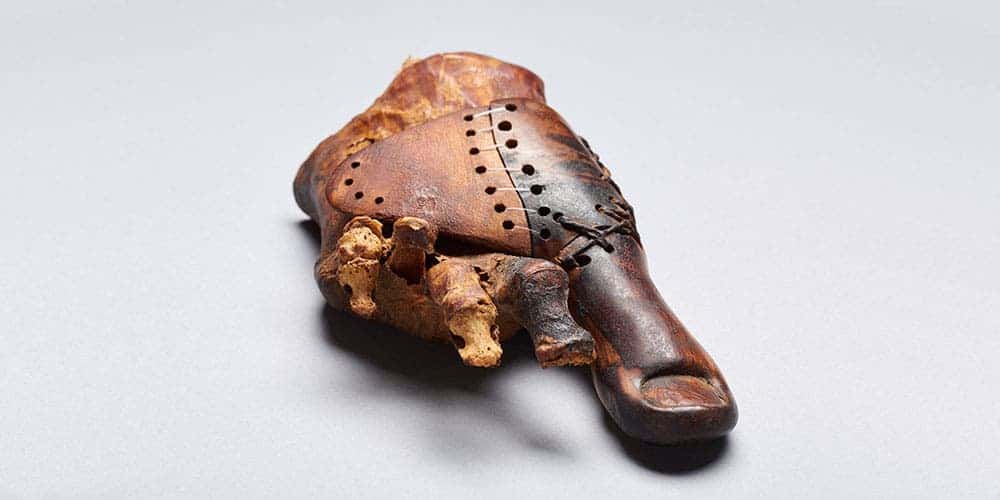Almost 3,000 years ago in Egypt, a priest’s daughter lost her left toe. She didn’t die of infection but she didn’t feel content to walk the rest of her days through the streets with a missing digit either. So she had a wooden prosthesis perfectly matching her foot made for her. Though thousands of years have since past, this medical wonder has withstood the test of time, much to the delight of Egyptologists from the University of Basel.
This piggy went to Luxor
The Swiss researchers used modern microscopy, X-ray technology, and computer tomography to investigate the ancient wooden prosthetic in unprecedented detail. This way, they learned about the materials and techniques used to fashion the medical artifact recovered from the necropolis of Sheikh ´Abd el-Qurna close to Luxor.
The Early Iron Age artificial toe illustrates top-notch skill from behalf of the craftsmen who fashioned it. These people were clearly very familiar with human physiognomy being careful to emulate even the subtlest curves and features of the human toe. It was also very practical, demonstrating a keen sense of engineering, judging from the extension and the robust structure of the belt strap. It must have been very costly too — the wearer was of high status indeed.
It is a very fortunate find. Not only has the prosthesis withstood the elements and the test of time, but it survived ruthless bandits too. It was retrieved from a plundered burial chapel at the graveyard hill of Sheikh ´Abd el-Qurna. The thieves must have cared very little for a wooden ‘trinket’ when so much flashy richness awaited.

View of the excavation area in the cemetery of Sheikh ´Abd el-Qurna (© University of Basel, LHTT. Image: Matjaž Kačičnik)
The chapel is part of a group of monumental, beautiful rock-cut tombs dated from the late 15th century BC raised for the small but influential upper class close to the royal family. Much later, the site turned into a home for locals – a process that began with the early Christian hermits and only ended in the early 20th century. For the past two years, Swiss researchers have been studying the Egyptian cemetery in hope of learning more about the ruling elite of the time.
Right now, the researchers are busy building digital models of the elevation, landscape, and architecture of this burial complex. Also, if you found this prosthesis interesting, read on about the 16th-century iron hand of a ‘cyborg knight’.











